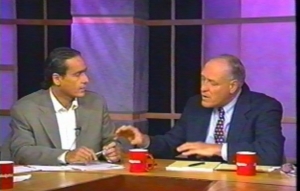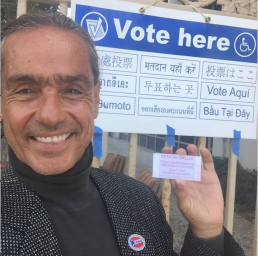Electoral Reform
 Democracy refers as much to a lively political culture as to a system of government. A diverse society needs a pluralistic structure to allow the widest possible range of views to be heard. To truly enfranchise citizens, everyone must have the right and the ability to have their say.
Democracy refers as much to a lively political culture as to a system of government. A diverse society needs a pluralistic structure to allow the widest possible range of views to be heard. To truly enfranchise citizens, everyone must have the right and the ability to have their say.
The United States has one of the lowest voter turnouts among established democracies. In a healthy democracy, high voter turnout results from the ability of voters to elect candidates who reflect their views.
By contrast, the U.S. single-seat, first-past-the-post, winner-take-all electoral system greatly limits voter choice and representation — a disincentive to vote — especially when combined with campaign finance laws that give disproportionate influence to big money.
Many who do vote, go to the polls primarily to vote for what they are against.
California’s failed top two experiment has only made this worse, limiting voters to only two choices in the general election, and making primary ballot access more difficult and expensive. This reduction in choice has led to historically low voter turnout. When few eligible voters participate and elect our representatives, the legitimacy and representative nature of our democracy is diminished.
Much electoral reform debate focuses upon who should draw the lines of districts, and how to make district elections competitive. But competitive districts don’t necessarily mean representative districts, and single-seat, winner-take-all elections are incapable of representing California’s diversity.
I support the use of multi-seat districts with proportional representation for the state legislature, and ranked-choice voting for single-seat statewide executive office. I also support a larger state legislature, which will allow for results to be more proportional and reflective of California’s diversity.
California currently has by far the lowest per-capita state representation in the United States. The number of seats in the California state legislature was set in 1879 when California’s statewide population was approximately 865,000. Today, more people live within a single State Senate District and are represented by a single State Senator. As of 2017 the state population is over 39 million — almost a million people per State Senate district – and yet the number of seats has never been increased.
I also support the use of ranked-choice voting for municipal, school, college, county and special-district elections
Where seats are elected in multi-seat, at-large elections, ranked-choice voting will make the results more proportional and hence more representative of the voters. Where seats are elected in single-seat districts, ranked-choice voting eliminates the need for holding run-off elections, reducing costs for candidates as well as the public that must pay to conduct the elections, and making it easier for voters to express their will by only having to vote once.

